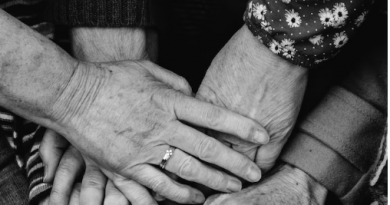Making healthcare inclusive for LGBTQ patients
As I scroll through my Facebook feed to admire friends who are celebrating Pride Month, I think about how far we’ve come as a society in accepting and loving our LGBTQ family, friends, colleagues, and peers.
But as a researcher with expertise in queer and feminist clinical ethics, I am also aware of how far we have to go in terms of the physical and mental health of our LGBTQ communities.
LGBTQ health disparities
LGBTQ people make up about four to five percent of the U.S. population. However, widespread research and recent surveys show that they face health disparities when compared to their heterosexual counterparts.
A recent survey parallels previous research revealing lesbian and bisexual women have higher rates of smoking both tobacco and marijuana, gay men have increased alcohol use, and bisexual men and women smoke tobacco at increased rates when compared to any other LGBTQ-identified population.
These patterns are a stark reminder that LGBTQ populations continue to face health obstacles. Researchers have studied at length as to why, including ongoing fears of perceived or real discrimination and bias from disclosure of one’s sexual and/or gender identity to healthcare providers, and structural stigma as institutional polices and cultural discourses impede upon LGBTQ equality.
 Notably, it also includes a lack of training for medical professionals on how to appropriately handle and talk about LGBTQ health.
Notably, it also includes a lack of training for medical professionals on how to appropriately handle and talk about LGBTQ health.
Oversimplification in medical training
The way we talk about LGBTQ patients in medical training and case studies may be part of the problem. The health and mental health needs of the LGBTQ population vary across identities and individualities, however, the textbook narrative providers use to train often only represent LGBTQ patients in the context of HIV/AIDS, promiscuity, and sexual risk behaviors.
This narrative of LGBTQ populations is a clear example of the ‘danger of a single story’ as outlined by Chimamanda Adichie.
Additionally, LGBTQ populations are intersectional, meaning that those who identify as LGBTQ also have identities that span across diverse religious, cultural, racial and immigrant communities. As a result, case studies that only look at a very restricted, antiquated, and discriminatory understanding of LGBTQ experiences adversely impact the care they will ultimately receive as patients.
Focusing solely on sexual behaviors and practices neglects and silences important mental health concerns facing LGBTQ-identified patients. This is relevant in light of the fact that LGBTQ-identified adolescents and young adults face higher rates of suicidality, depression and loneliness than their heterosexual peers.
A path forward
Important work is being done to help alleviate these disparities. Thanks to the work of academics, clinicians, activists, and community members, standards of care for LGBTQ populations have been developed.
The AMA, the GLMA, the CDC and other resources, such as Essential Access Health, the National LGBT Health Education Center, and the Office of Disease Prevention and Health Promotion have proposed ways to care for LGBTQ patients, and offer practical tools in the way practice can reform to be inclusive. This may involve staff sensitivity and training, inclusive terminology and language, and awareness of specific issues that may affect LGBTQ patients.
Healthcare practices shouldcreate inclusive, welcoming, and safe spaces for LGBTQ patients. This may include changing the conversations we have with patients, the demographic forms administered, and the physical environment (including pamphlets, posters and distributed health information).
Upholding these strategies can make the setting much more approachable and accessible to those who have so often faced barriers to care. It’s important that healthcare providers begin to use a resiliency framework to guide their practice with LGBTQ patients.
I encourage us to continue this conversation, asking the following questions about how we can strategize to increase awareness of LGBTQ populations:
- How can we involve LGBTQ writers in case study write-ups?
- How can we teach the next generation of physicians, nurses, clinicians and educators to appreciate LGBTQ voices and perspectives?
- How can we shift healthcare to take a more intersectional approach to be more inclusive of LGBTQ populations in conjunction with an individual’s other identities?
- How can we start including diverse narratives of LGBTQ experiences into the healthcare curriculum?
Exploring LGBTQ strengths and health promotion activities is essential in helping to enhance patient-physician relationships and provides LGBTQ people with the tools to reach their full mental and physical health potential.
-By Sophia Fantus, Ph.D., M.S.W., clinical ethics fellow in the Center for Medical Ethics and Health Policy at Baylor College of Medicine




Very informative
Providing inclusive services and care for LGBTQ people is important. We have to ensure that they also receive the same high quality care as others do.
family healthcare San Antonio TX